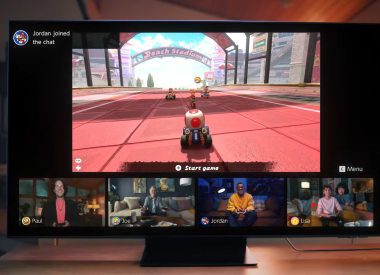Inventor Harald Haas, Chair of Mobile Communications at the University of Edinburgh, revealed his plan to invent light-based wi-fi, dubbed Li-Fi, back in 2011 during a TED Talk in Scotland. Now, the first Li-Fi prototype is complete.
In the UK, Haas and his partners at PureLi-Fi and Edinburgh have been perfecting the process of Visible Light Communication, VLC. Haas has finished developing a solar Li-Fi router that connects to LED light access points used to transmit data and access the internet. This new technology could fundamentally change the way internet works if it is adapted into current communications infrastructure.
The general idea behind Li-Fi, light fidelity, is that a single LED light bulb can generate a high-speed wireless internet connection that is not only faster and more accessible than modern day wi-fi, but way more secure. Light is part of the electromagnetic spectrum, why not use it to transmit data?
Haas explained to CNN in 2012, "My big idea is to turn light bulbs into broadband communication devices ... so that they not only provide illumination, but an essential utility. It's a bit like sending a Morse code signal with a torch, but at a much faster rate and using the alphabet that computers understand.”
Infrastructure for Li-Fi technology already exists. There are thousands of lights everywhere, an estimated 14 billion. During the TED Talk presentation, Haas demonstrated his Li-Fi technology using a 3$ LED light bulb. “This is data through illumination,” said Haas. Data transmission using an LED light bulb is free, not to mention LED bulbs themselves are extremely energy efficient to begin with. “Light has been around for many millions of years. In fact, it has created us. It has created life...so it its inherently safe to use,” said Haas.
Haas outlined four issues with standard Wi-Fi:
Capacity: Modern wi-fi transmits data via electromagnetic waves, radio waves in particular. Radio waves are scarce, expensive, and present range limitations. Haas said he believes the current technology will not have the capacity to fulfill the demand for high speed internet access as more and more people start to use mobile devices that rely on a wi-fi connection. “We are simply running out of spectrum,” said Haas.
Efficiency: There are 1.4 million cellular radio masts or base stations worldwide that are only 5% energy efficient. The energy consumed is not used to transmit radio waves, but to cool the base stations. Congested cellular radio bases weakens bandwidth strength.
Availability: Wi-Fi is not available everywhere. Mechanical wireless infrastructure is needed to access the internet. These tools are not available to everyone, but light is. Current wi-fi also risks interference over electromagnetic waves in places like planes and subways.
Security: Radio waves can penetrate through walls, light can’t. Each device would have its own light source. If someone wanted to hack, they’d have to have access to the source directly. Transmitting data via personal Li-Fi eliminates susceptibility and cybersecurity risks that huge modern day wireless network present.
Haas envisions street lamps transformed into public Li-Fi spots and smartphone flashlights and cameras rebuilt to incorporate light-based wi-fi. No more worrying about electromagnetic wave interference between devices. Gadgets, IoT and future consumer tech would ideally all have Li-Fi compatibility in the future. Revamped Li-Fi compatible medical instruments and re-designed streets, traffic lights, and transportation that can all transmit data and access the internet.
Haas said the real world applications are “beyond imagination.” Internet access has become such a fundamental part of daily life. Users could switch back and forth seamlessly from LI-Fi, Wi-Fi and mobile networks as necessary. If the invention builds momentum, Li-Fi has the potential to become the infrastrucutre behind developing 5G networks and revolutionize the way we interact with the internet.














![[EG April 19] Best 'Stardew Valley' Mods That Will Change](https://d.player.one/en/full/226012/eg-april-19-best-stardew-valley-mods-that-will-change.png?w=380&h=275&f=955520b8313253ee3c39c791f6210f38)



